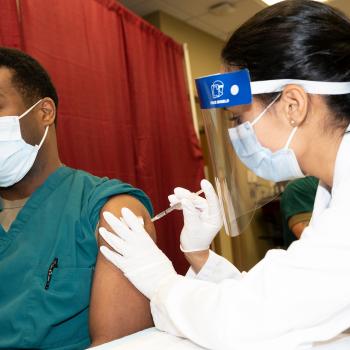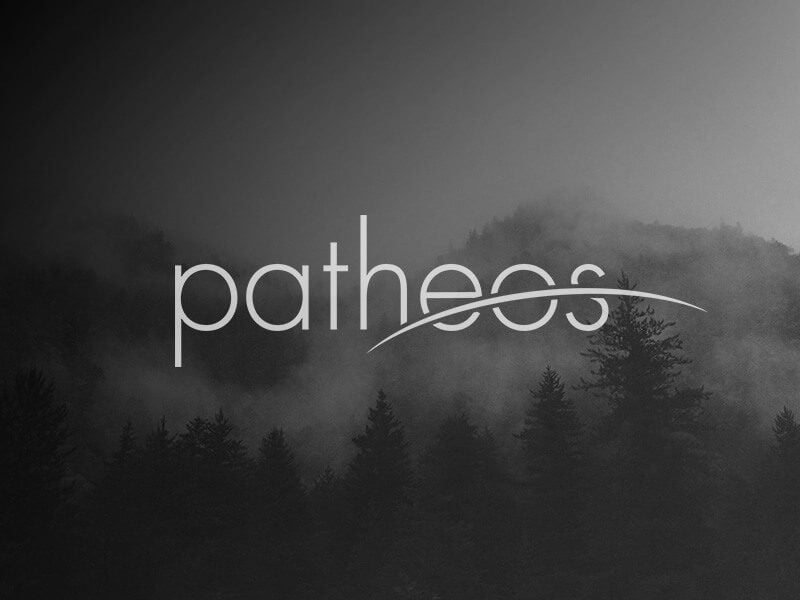Readers may have seen that in a recent post about an unrelated topic, I made mention of the medieval eucharistic test question “Quid sumit mus?” or “What does a mouse consume?” The question is not merely the product of an age that concerned itself with mice in the tabernacle, but is, rather, a way of providing a context for elucidating what the Church does and does not understand itself to affirm when it professes Christ’s substantial presence in the Eucharist.
or “What does a mouse consume?” The question is not merely the product of an age that concerned itself with mice in the tabernacle, but is, rather, a way of providing a context for elucidating what the Church does and does not understand itself to affirm when it professes Christ’s substantial presence in the Eucharist.
One of our readers, Father Larry, commented that he did not find Thomas’ response to this question satisfactory because it does not properly safeguard the Church’s faith in the Real Presence. I had very briefly, and perhaps inadequately, summarized Thomas’ position as follows:
“the mouse does not access the substance of Christ’s Body and Blood but only eats it per accidens.” (I note now that the final “it” is ambiguous.)
To which Father Larry responded:
“With all due respect to St. Thomas Aquinas, whom I count as one of my patron saints and often look to for theological answers, I would like to pose another answer to the question: What does the mouse consume? Since the whole substance of the bread is transubstantiated into the Body of Christ and the whole substance of the wine is transubstantiated into the substance of the Blood of Christ, I would argue that the Real Presence does not leave the Eucharist if a mouse would consume it because ex opere operato, because the substance has changed. The mouse eats not only the accidents but also the substance. Arguing that the substance departs before entering an unworthy soul, would create three problems. 1) Where does the Substance of the Real Presence go? and 2) Does the same disappearing substance happen when someone receives the Eucharist in a state of mortal sin? How can the reception of accidents confer the penalties sacrilege on a soul? 3.) Why would Satanists want a consecrated host for a Black Mass if Christ was not present? Rather, while it would be a great tragedy if such things would ever happen, I would argue that while the mouse does consume the Real Presence, because of the ex opere operato transubstantiation; however, the mouse fails to benefit spiritually from the reception, ex opere operantis, because it does not have a rational and immortal soul capable of benefitting from the reception. The theology preserves the doctrine of the Real Presence better than the Thomistic argument of only receiving the accidents. Since I am not a Latin Scholar, please excuse me if I have used these terms incorrectly. Your analysis of my argument would be appreciated.”
Rather than responding to Father Larry in the comboxes I felt it would be best to write a new post, in part because I had long ago promised a post about sacramental presence in response to concerns about my suggestion that Christ’s Eucharistic presence could not be helpfully understood as “physical.” As I was drafting my response to Father Larry, it seemed to me that this was, in fact, the perfect opportunity to offer an explanation for what the Church means by affirming a “sacramental” mode of presence, as it did at the Council of Trent.
I would like to offer Father David Power O.M.I.’s discussion of Thomas on this question as the starting point for my reflection:
“Becoming present in the sacrament in no way affects change in [Christ’s] being. What is done to the bread or to the wine is not done to Christ. If it is subject to physical action, he is not. Though he is present whole and entire and therefore with his own “quantitas dimensiva,” he is not present through his quantity or in a quantitative way. Taking up the litmus test of scholastic theology, “quid sumit mus,” or what is eaten by a mouse that gets at the sacramental bread, he says that the mouse does indeed eat the body of Christ, but only per accidens. That is, it eats the accidents through which the body is present but does not get at the substance that is sacramentally present. It is only humans that attain in the sacrament to the substance, whether they receive well or badly, once they act with the knowledge of faith. Indeed, were a person to eat a host that is consecrated without knowing this, the person would consume the accidents under which Christ offers himself but would not receive what is offered, or in other words would have no contact with the reality itself.” (David Power, The Eucharistic Mystery, 224-225.)
The key issue here is that Christ’s sacramental presence is not a presence analogous to any natural presence that we experience. In any natural situation, to consume the accidents would be inseparable from consuming the substance. To eat the accidents of bread is to eat the substance of bread. This is not because substance is a kind of deeper physical reality hidden away at a molecular or sub-atomic level, but rather because in any natural situation accidents presume the existence of a substance. Accidents are unthinkable without reference to their substance because, within the philosophical framework in use here, substances hold accidents in existence. Or, accidents subsist in substances. In the Eucharist, however, the accidents have been dissociated from their substance. The reason Catholic theology has insisted that the accidents are no longer properly called bread or wine following the consecration is precisely this dissociation.
Now, the substance of the Body and Blood of Christ do not simply take over every function of the substance of the bread and wine. Christ is not bread and wine in his natural state and so the substance of his Body and Blood cannot properly keep the accidents of bread and wine in existence. They can only keep their own proper accidents in existence. If the eucharistic presence were a natural one, the accidents of bread and wine would become the accidents of Christ’s Body and Blood as soon as the substance changed. Thomas is actually quite perplexed by what does, in fact, keep the accidents of bread and wine in existence after the consecration and concludes that the most basic accident, that a thing takes up space (called by him “the quantity tending to measure”), serves as a kind of substitute for the missing substances of bread and wine. All other accidents now subsist in the “quantity tending to measure” rather than in the substance under the accidents, namely that of Christ’s Body and Blood.
Now, accidents are that which is present to the senses and substance is that which is present to the understanding. We must be careful to avoid extrapolating from this that accidents are objective and substances are subjective. What is present to the understanding exists regardless of whether or not it is understood exactly as much as accidents exist regardless of whether or not they are perceived. The Catholic answer to the Zen question about trees falling in forests with no one around is “Of course they make a sound!”
Because the eucharistic change is not a natural change, the accidents of bread and wine do not become the proper accidents of Christ’s Body and Blood. They remain the accidents of bread and wine. This is, in fact, essential to the sacramental nature of the presence. A sacrament is a sign and a sacramental presence is a presence that is predicated on the logic of sign.* The bread and wine no longer exist in themselves, but purely as the sacramental sign of Christ. Father Herbert McCabe O.P. says that they exist as pure language, that is, they have become “the Word of God.”
Access to the substance, therefore, cannot be had as it can be in a natural presence. Were Christ present in his natural form, a mouse chewing on his toe would access his substance. But access to a sacramental presence, where the accidents are not those proper to the substance but, rather, a sign of the substance, requires that the sign be read. That is why it is not only the mouse that does not access it, but the ignorant human person as well.
Thomas does not argue that Christ’s substance somehow leaves the accidents when a mouse nibbles on them. The substance remains for as long as the substance of bread could be said to remain, that is, until the accidents are no longer the accidents of bread. Instead he argues that, though Christ’s substance really is under the accidents of the bread, it is not accessible to the mouse. His claim that the mouse does not access the substance of Christ’s Body and Blood is like saying that a blind person does not access the Mona Lisa. It is not that he is denying the reality or the presence or the splendor of the Mona Lisa. He is just saying that there is an impairment in accessing it.
If it is now clear that Thomas does not argue that the substance departs as the mouse approaches, it seems to me that the answers to Father Larry’s further questions become self-evident. I think Father Larry is absolutely right, by the way, to point out that any idea about the substance departing in such a way leads to theological problems, and probably more than three! I would add that a substance that never ceases would also be a cause of theological confusion. Thomas says, however, that the substance of Christ’s Body and Blood is no longer present exactly when the substance of bread or wine would be said to be no longer present, that is, very shortly after we consume it. In other words, when the sign is gone, so is the presence.
____________________________________________________________
* Interested readers might check out volume 65 (year 2000) of Irish Theological Quarterly. In issue 2, Germain Grisez ties himself in knots concerning Christ’s Eucharistic Presence because he misses this essential element. In issue 4 Roch Kereszty O.Cist. offers a helpful corrective in which he notes that “Grisez ignores the philosophy of symbol because he fears that any symbolic interpretation would compromise the dogma of ontological change in the Eucharistic elements.”
Brett Salkeld is a doctoral student in theology at Regis College in Toronto. He is a father of two (so far) and husband of one.












